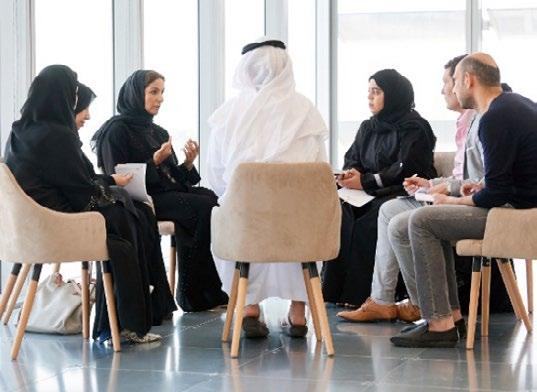
4 minute read
3.3 Global Trends in Donor Behaviour and Fundraising Giving Patterns
Months into the pandemic, new trends have emerged into how the economic impact has affected the way charities and nonprofit organizations interact with their donors and supporters. These trends and insights usually constitute an essential element that guides philanthropy planning for fundraising. Enthuse, a fundraising, donations and events registration platform in the United Kingdom which has helped some 4,000 British charities raise more than £70 million, has identified recent trends in the latest Enthuse Donor Pulse Report. These trends provide good insights into donor behaviour and patterns of recent giving in response to the pandemic.
Here are the key takeaways:
Advertisement
1
The rise of impulse donations. The number of people donating to charity has increased (by 69%) with a preference for one-off, spur-of-the-moment donations rather than a plan to donate to a particular charity. This shows a clear indication of a willingness to help, with a special focus on what people feel most needs their support during the pandemic being the key driver to impulse giving. Enthuse data also show that while the number of people willing to give has increased, the average amount donated has gone down.
4 Donor Pulse. Autumn 2020: impact of Covid-19 on donor behaviour - by Enthuse Intelligence.
2
3
The increase of drifting donors. The data suggests that younger age groups are the most likely to give, yet older age groups are the most committed to giving regularly. The report suggests that behind this difference in certainty of giving is the level of commitment donors have to charities. These two trends relate to differences between one-off and recurring donors. Enthuse underscores the importance of first capitalizing on the “one-off donations” and then moving donors towards regular giving through a more structured approach.4
The “give and forget” donor. With the rise of digital donation channels, there has been an increase in the number of people who are unable to remember the name of the last charity to which they donated. The data showed that 33% cannot recall the name, with the younger age group having the worst level of recall. This highlights the importance of effective communications and branding, and having them front and centre in the digital world.
Additional research by Imagine Canada, a national charitable organization advocating on behalf of Canada’s charitable and non-profit sector, provided other insights into fundraising trends that are relevant to the Abu Dhabi context. The landscape of giving has changed and has moved online; in addition, the composition of those who are giving and, more importantly, who could be giving is also changing. This starts with the importance of understanding demographics and the effects of multiculturalism and shows
the need to tap into this previously underrepresented donor pool. Looking inward, non-profit organizations and charities might start by strengthening their teams to mirror the diverse composition of communities, and to better approach and engage newcomers and expatriates in the longer term.
Trust and transparency within charities are also becoming key drivers for donors, underscoring the importance of ensuring that a charitable organization’s processes, operations, activities and partnerships are transparent, so it is able to build trust with donors, increase engagement and ultimately increase the donations it receives.
The fast pace of digitization in the sector. While online fundraising is not new, the rate at which non-profit organizations and charities need to digitize is rapidly increasing. As a consequence, this creates an additional barrier between them and their donors. To overcome this barrier, organizations are turning to technology such as videoconferencing software and virtual auctions and marathons as innovative ways of promoting their digital-friendly initiatives.
The need to harness the next generation of donors long-term.
This trend requires special attention be paid to the younger generation, who want to contribute to philanthropic efforts of more meaningful causes and see the sustainable impact of their contributions. This points to the next generation of donors being more selective and may drive and shape longer-term systemic interventions and causes. The final insights are taken from the Global Philanthropy Report,6 global research developed by the Harvard Kennedy School, in collaboration with the Union Bank of Switzerland and the Ford Foundation, with the aim of providing a comparative analysis of global philanthropic giving, surveying some 30,000 foundations in 38 countries to understand the magnitude, vitality and impact of global institutional philanthropy.
The three key takeaways are:
1
2
3
The education sector is a top priority worldwide with nearly 35% of foundations focusing some of their resources on the sector. Education is seen as a key to individual opportunity and the engine of national economic prosperity. Addressing vulnerabilities and poverty also emerged as a priority where priority beneficiaries include people living in poverty, people with disabilities and elderly. Other focus areas and priorities include human services and social welfare (21%), followed by health (20%).
The importance of alignment with government priorities
is also important for more than 50% of the foundations surveyed, as is alignment with the global sustainable development goals (SDGs). These goals focus on the quality of education, health and wellbeing, poverty elimination, decent work and economic growth.
The recognition of the importance of collaboration and
partnerships to achieve higher impact and scale, as well as the shift towards multi-donor or public fundraising models, moving away from the conventional practice of one principal source of philanthropic capital.
5 Guide to 2021 Fundraising Trends, Imagine Canada and Keela, September 2020. 6 Paula D. Johnson, Global Philanthropy Report: Perspectives on the global foundation sector, John F. Kennedy School of Government at Harvard University, 2018.






